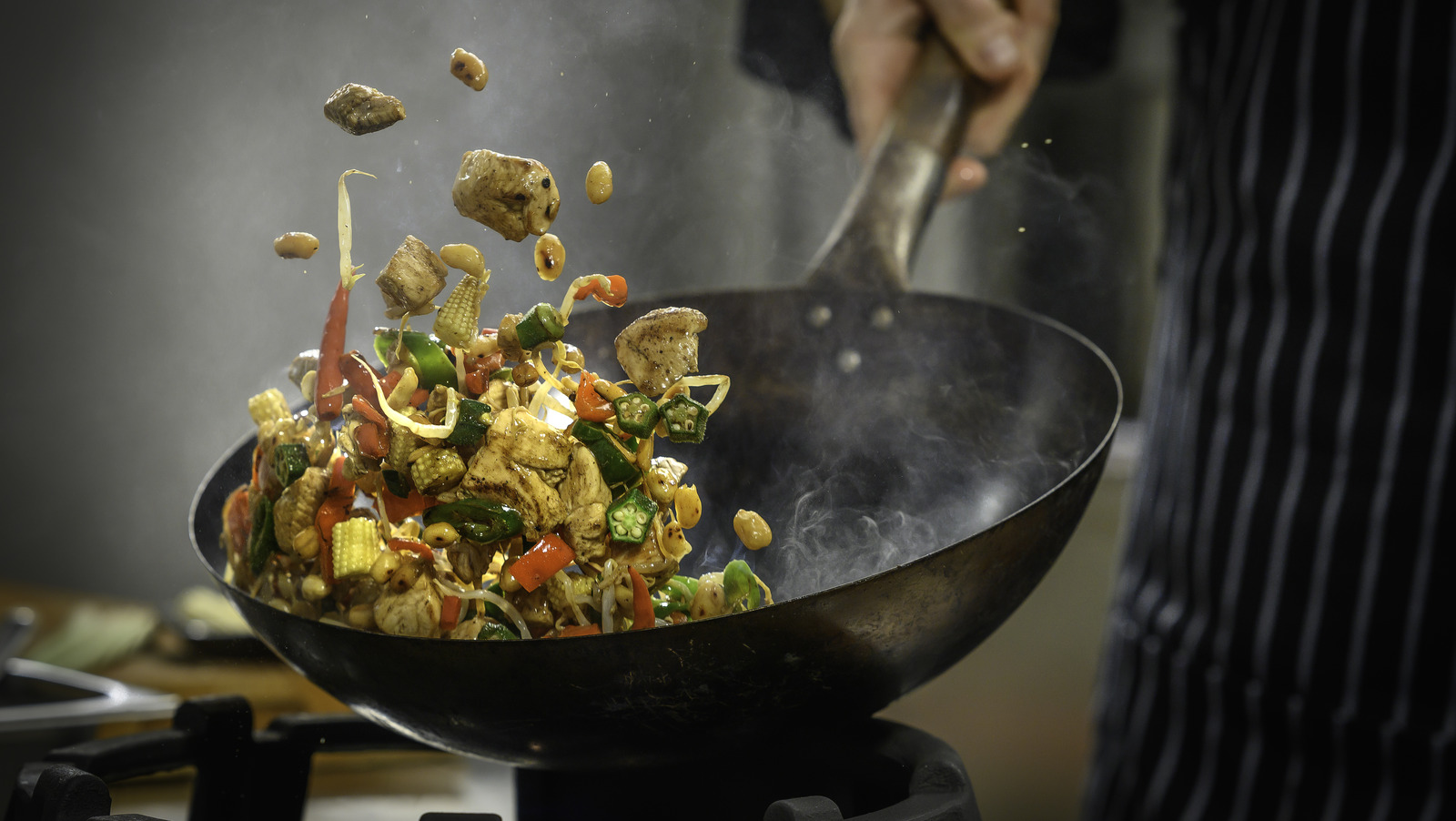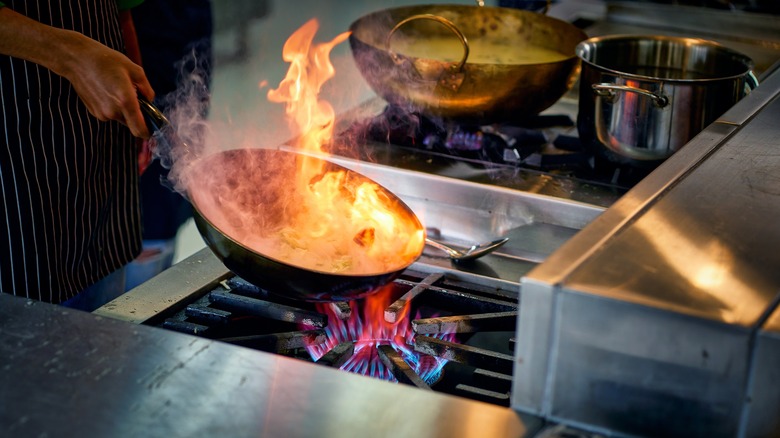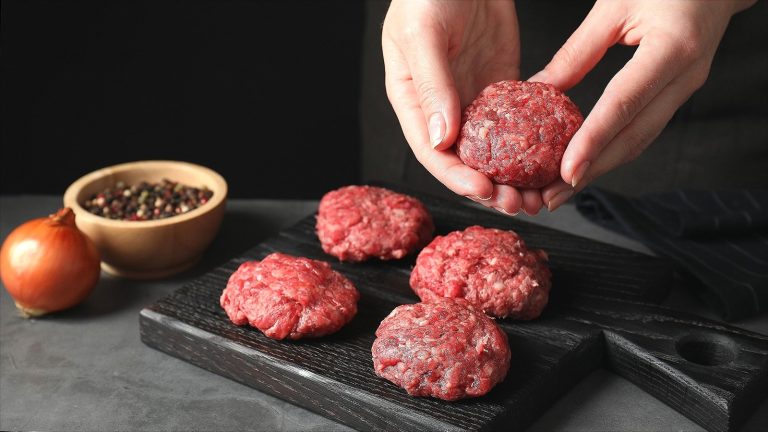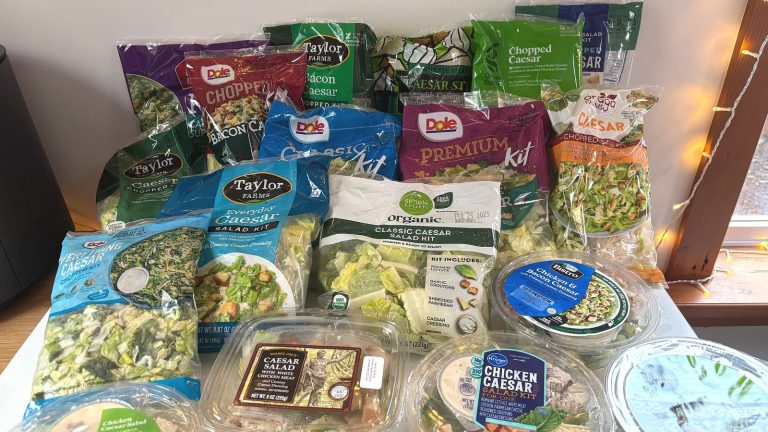Getting a new wok is an exciting moment in a home cook’s life, because it either means you’re expanding your culinary tools of the trade, or you’ve used your old one until it can no longer do its job properly — which shows serious dedication (and mileage) in the kitchen. However, before you toss that new pan on the stove and start throwing meat and veggies in, you’ve got to season it. The process only takes a few minutes, but you might be a bit gun-shy due to rather smoky experiences in the past. Food Republic spoke to chef Michael Schukar of Toku to get all the best advice for prepping your specialty pan (without stirring up all that dreaded smoke). He said that when you initially season the wok, first give it a wash with soap and water — and make sure it’s bone dry.
“Then[,] you heat it up and use an oil with a high smoke point and coat the wok with it,” the expert explained. Consider refined avocado oil or safflower oil, as these are some of the best high-heat oils that won’t burn as the temperature climbs. You should also consider opening a window and turn the stove’s exhaust fan on high for extra ventilation. Next, Schukar advised pouring out the oil and wiping off what’s left. For a truly seasoned wok, “repeat two or three times until [the] patina — a natural nonstick surface” forms.
How to expertly cook with (and clean) your wok
Chef Michael Schukar stated that high heat is an essential component of cooking with a wok — it’s what the specialty pan were made for. When you are getting ready to prepare a meal, the expert advised, “Start by heating your wok with nothing in it and add oil once the wok has reached a high temperature.” Afterwards, pour out the oil, and use whatever sheen is left to cook with — this keeps the vegetables from getting too greasy, Schukar explained.
When it comes to cleaning your wok after use, our expert was vehement about keeping water out of the on-stove seasoning process. You can use hot water to momentarily rinse it out after cooking, but then use only high heat and a nonabrasive scrubber so you can “clean your work without damaging the surface.” Then you’ll want to season it by following the same steps as your initial process — after each use, it should have a new patina and be ready for your next stir-fry adventure. According to Schukar, woks should be seasoned semi-regularly, depending on how often you break it out. “The more you use it, the more you want to season it,” he shared. This will help maintain the quality of the pan and extend its life for as long as possible.






